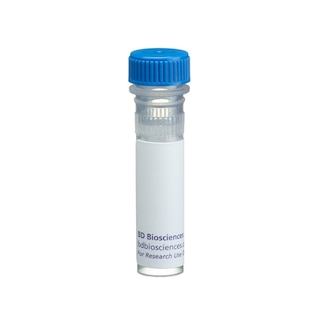-
Reagents
- Flow Cytometry Reagents
-
Western Blotting and Molecular Reagents
- Immunoassay Reagents
-
Single-Cell Multiomics Reagents
- BD® OMICS-Guard Sample Preservation Buffer
- BD® AbSeq Assay
- BD® OMICS-One Immune Profiler Protein Panel
- BD® Single-Cell Multiplexing Kit
- BD Rhapsody™ ATAC-Seq Assays
- BD Rhapsody™ Whole Transcriptome Analysis (WTA) Amplification Kit
- BD Rhapsody™ TCR/BCR Next Multiomic Assays
- BD Rhapsody™ Targeted mRNA Kits
- BD Rhapsody™ Accessory Kits
-
Functional Assays
-
Microscopy and Imaging Reagents
-
Cell Preparation and Separation Reagents
-
- BD® OMICS-Guard Sample Preservation Buffer
- BD® AbSeq Assay
- BD® OMICS-One Immune Profiler Protein Panel
- BD® Single-Cell Multiplexing Kit
- BD Rhapsody™ ATAC-Seq Assays
- BD Rhapsody™ Whole Transcriptome Analysis (WTA) Amplification Kit
- BD Rhapsody™ TCR/BCR Next Multiomic Assays
- BD Rhapsody™ Targeted mRNA Kits
- BD Rhapsody™ Accessory Kits
- United States (English)
-
Change country/language
Old Browser
This page has been recently translated and is available in French now.
Looks like you're visiting us from {countryName}.
Would you like to stay on the current country site or be switched to your country?





Western blot analysis of Hic-5 on a rat lung lysate. Lane 1: 1:250, lane 2: 1:500, lane 3: 1:1000 dilution of the mouse anti- Hic-5 antibody.

Immunofluorescence staining of human fibroblasts.


BD Transduction Laboratories™ Purified Mouse Anti- Hic5

BD Transduction Laboratories™ Purified Mouse Anti- Hic5

Regulatory Status Legend
Any use of products other than the permitted use without the express written authorization of Becton, Dickinson and Company is strictly prohibited.
Preparation And Storage
Recommended Assay Procedures
Western blot: Please refer to http://www.bdbiosciences.com/pharmingen/protocols/Western_Blotting.shtml
Product Notices
- Since applications vary, each investigator should titrate the reagent to obtain optimal results.
- Please refer to www.bdbiosciences.com/us/s/resources for technical protocols.
- Caution: Sodium azide yields highly toxic hydrazoic acid under acidic conditions. Dilute azide compounds in running water before discarding to avoid accumulation of potentially explosive deposits in plumbing.
- Source of all serum proteins is from USDA inspected abattoirs located in the United States.
Companion Products

.png?imwidth=320)
Focal adhesions are cell structures terminal to the actin-stress fiber bundles. They attach cultured cells to their substratum or extracellular matrix. These adhesions occur through the integrin receptor molecules which link cytoskeletal proteins and extracellular matrix. The intracellular adhesion is composed of a number of proteins such as paxillin, VASP, vinculin, and the focal-adhesion kinases FAK and PYK2/CAKβ. Hic-5, also described as hydrogen peroxide inducible-mRNA, is a focal adhesion protein that binds to FAK and PYK2. It is ubiquitously expressed with the highest levels found in lung, spleen, and heart. Induction of Hic-5 is accomplished by hydrogen peroxide or TGFβ1 and is repressed in K-ras transformed cells. Like paxillin, Hic-5 is tyrosine phosphorylated in Src-transformed cells and is highly similar to paxillin in its primary structure. Both proteins contain LIM domains and LD motifs. In addition, Hic-5 localizes to focal adhesions and co-immunoprecipitates with PYK2/CAKβ in vivo. Thus, Hic-5 may be a substrate for CAKβ and play a role in signal transduction during proliferation, cell motility, and adhesion.
Development References (4)
-
Jia Y, Ransom RF, Shibanuma M, Liu C, Welsh MJ, Smoyer WE. Identification and characterization of hic-5/ARA55 as an hsp27 binding protein. J Biol Chem. 2001; 276(43):39911-39918. (Biology: Immunoprecipitation, Western blot). View Reference
-
Matsuya M, Sasaki H, Aoto H, et al. Cell adhesion kinase beta forms a complex with a new member, Hic-5, of proteins localized at focal adhesions. J Biol Chem. 1998; 273(2):1003-1014. (Biology). View Reference
-
Shibanuma M, Mashimo J, Kuroki T, Nose K. Characterization of the TGF beta 1-inducible hic-5 gene that encodes a putative novel zinc finger protein and its possible involvement in cellular senescence. J Biol Chem. 1994; 269(43):26767-26774. (Biology). View Reference
-
Wang X, Yang Y, Guo X, et al. Suppression of androgen receptor transactivation by Pyk2 via interaction and phosphorylation of the ARA55 coregulator. J Biol Chem. 2002; 277(18):15426-15431. (Biology: Immunoprecipitation, Western blot). View Reference
Please refer to Support Documents for Quality Certificates
Global - Refer to manufacturer's instructions for use and related User Manuals and Technical data sheets before using this products as described
Comparisons, where applicable, are made against older BD Technology, manual methods or are general performance claims. Comparisons are not made against non-BD technologies, unless otherwise noted.
For Research Use Only. Not for use in diagnostic or therapeutic procedures.